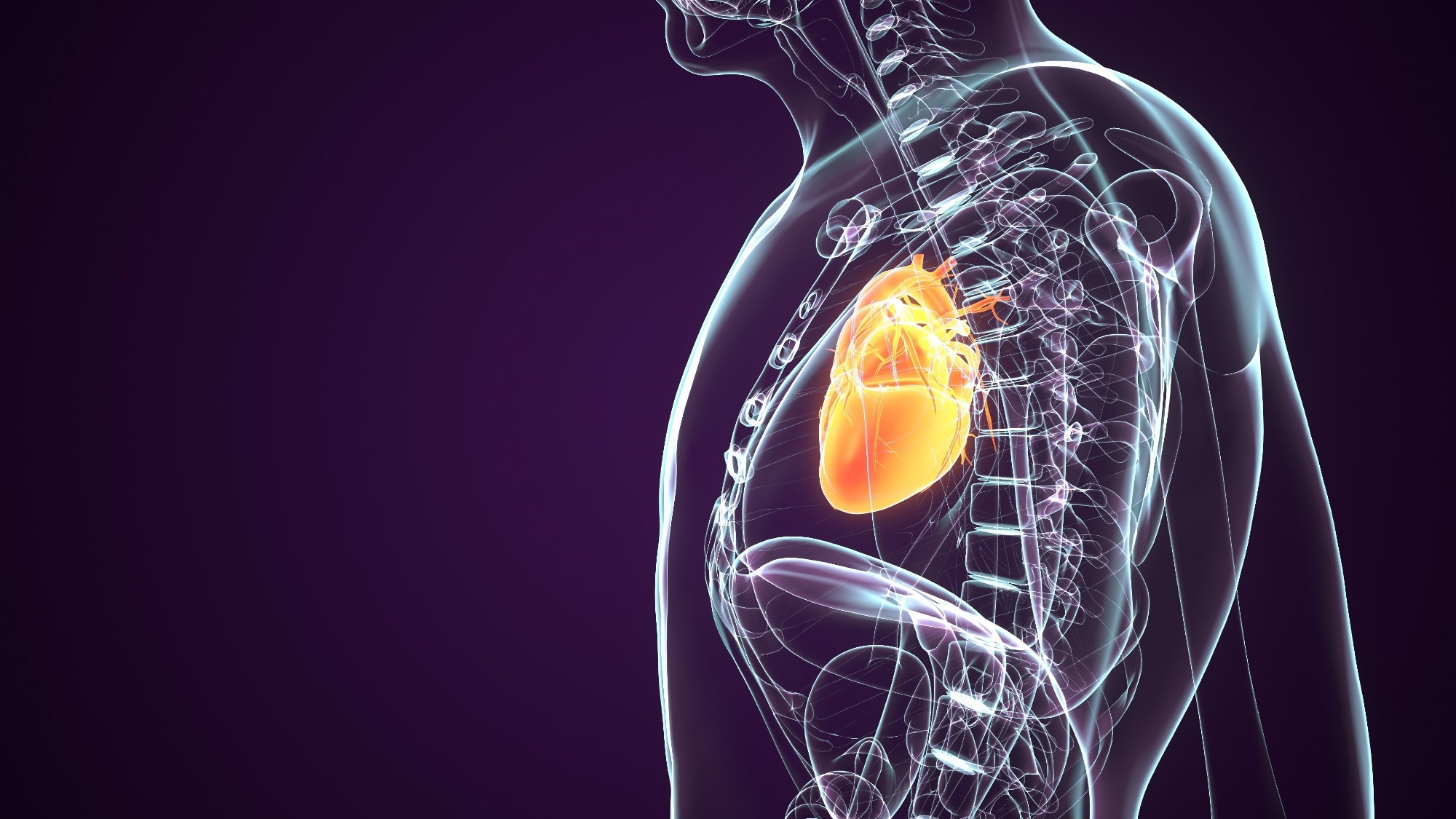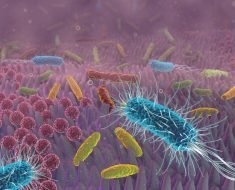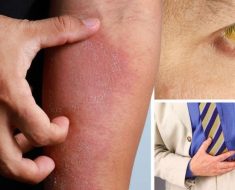In a recent review published in Toxicology and Applied Pharmacology, researchers discussed the impacts of organophosphates (OP) and severe acute respiratory syndrome coronavirus 2 (SARS-CoV-2) infections on cardiovascular (CVS) health.
 Study: Synergistic action of organophosphates and COVID-19 on inflammation, oxidative stress, and renin-angiotensin system can amplify the risk of cardiovascular maladies. Image Credit: Life science/Shutterstock
Study: Synergistic action of organophosphates and COVID-19 on inflammation, oxidative stress, and renin-angiotensin system can amplify the risk of cardiovascular maladies. Image Credit: Life science/ShutterstockCardiotoxicity is an emerging global health concern and an important cause of mortality. OPs have been reported to cause several cardiotoxic effects facilitating myocarditis, systolic dysfunction, arrhythmia, cardiac muscle weakening, and abnormal cardiac electrophysiology. Similar cardiac injury has been reported in SARS-CoV-2-positive patients, and, therefore, the synergistic effects of SARS-CoV-2 and OP compounds could amplify cardiotoxicity risks.
About the review
In the present review, researchers discussed cardiotoxicity induced by OPs and coronavirus disease 2019 (COVID-19).
SARS-CoV-2-mediated CVS injury
SARS-CoV-2 disrupts cytokine homeostasis, redox balance, and angiotensin-II/AT1R axis to promote CVS injuries. The SARS-CoV-2 receptor, angiotensin-converting enzyme 2 (ACE-2), is expressed in cardiac pericytes. SARS-CoV-2-induced oxidative stress, cytokine storm, and disrupted renin-angiotensin system could further escalate COVID-19-associated CVS issues in patients. Elevated angiotensin II levels can cause cardiomyocyte hypertrophy.
SARS-CoV-2-induced myocytolysis fuels auto-immune reactions that are primed by the release of cellular antigens like myosin or M2 muscarinic receptors and beta1-adrenergic receptors (β1AR). The release of the receptors triggers the generation of autoantibodies, such as anti-β1AR antibodies that bind with β1AR to promote pathological cardiac remodeling and can cause dilated cardiomyopathy.
SARS-CoV-2 exposure can promote the expression of adhesion molecules, such as intracellular adhesion molecule 1 (ICAM-1), vascular CAM-1 (VCAM-1), P-selectin, and E-selectin on vascular endothelium by activation of nuclear factor kappa B (NF-κB) and activator protein 1 (AP-1), promoting thrombus formation. As a result, vascular endotheliitis, heart enlargement, and myocardial infarction can occur.
Cardiac injury can be identified by elevated troponin I and T levels and N-terminal pro-B-type natriuretic peptide, fast and irregular heartbeats, markedly reduced ventricular systolic function, and reduced ejection fraction, higher D-dimer levels, fibrinogen degradation products, longer prothrombin time, and activated partial thromboplastin time. In addition, abnormal electrocardiogram (ECG) findings such as ST elevation, prolonged Q-Tc interval, and T wave inversion have been reported.
OP-mediated CVS injury
OPs are widely used as pesticides in agricultural fields to enhance crop production and meet the ever-increasing demands of crops, fruits, and vegetables in the global market. They have also been used as flame retardants, plasticizers, antifoaming or anti-wear agents in lacquers, hydraulic fluids, and floor polishing agents.
OP poisoning can trigger CVS issues by causing myocarditis, CVS edema, arrhythmia, systolic malfunction, infarction, and altered electrophysiology. Human serological paraoxonase 1 level are declined by severe OP poisoning, and low paraoxonase activity in serum contribute to MI development and coronary heart disease.
Being a prominent cholinesterase inhibitor, OPs can fuel arrhythmia, coronary artery disease, and congestive heart failure. Irregular pulse rates, torsades de pointes, right bundle branch block with atrial fibrillation, and polymorphic ventricular tachycardia have been reported. In rats, OP poisoning has caused loss of transverse striations, wide interfascicular spaces, cytoplasmic vacuolization, and separation of myofibrils in cardiac muscles.
Exposure to OPs such as fenthion can trigger focal myocardial damage (micronecrosis), interstitial cellular infiltrates (myocarditis), necrosis, and/or apoptosis in cardiac tissues. OPs generate reactive oxygen species (ROS) and disturb redox balance in cellular moiety to activate death signals like the disruption of mitochondrial permeability transition pore, calcium ions (Ca2+) dyshomeostasis, and adenosine triphosphate (ATP) depletion implicated in cell death. As a result, elevated levels of myocardial injury markers (creatine kinase-Mb and troponin I) paired with heart failure markers (NT-proBNP) have been observed in OP poisoning.
Mechanistic similarities between OP poisoning and SARS-CoV-2-induced cardiotoxicity
Endothelial dysfunction is a key feature of CVS diseases. It is linked to elevated levels of pro-inflammatory cytokines such as tumor necrosis factor-alpha (TNF-α), interleukin (IL)-1β, IL-6, and interferon-gamma (IFN-γ), and both, SARS-CoV-2 and OP compounds can cause endothelial injury. Exposure to OPs and SARS-CoV-2 promotes C-reactive protein (CRP) upregulation, ROS generation, and NF-kB pathway activation.
OP compounds and SARS-CoV-2 can cause renin-angiotensin system (RAS) impairments, reduce antioxidant levels and increase the cytosolic release of Ca2+ from intracellular stores, leading to cardiac remodeling, vasoconstriction, cardiac-lipid peroxidation and protein damage in cardiac tissues. Elevated diastolic blood pressures, cardiomyocyte alterations and vascular inflammation, apoptosis, and/or necrosis have been observed in both conditions, OP poisoning and COVID-19.
Overall, the review findings showed that inflammation triggered by SARS-CoV-2 and OP chemicals could aggravate cardiac issues that may amplify mortality risk in patients with COVID-19.
- P. Rajak, S. Roy, S. Podder, et al., (2022), Synergistic action of organophosphates and COVID-19 on inflammation, oxidative stress, and the renin-angiotensin system can amplify the risk of cardiovascular maladies. Toxicology and Applied Pharmacology. doi: https://doi.org/10.1016/j.taap.2022.116267 https://www.sciencedirect.com/science/article/pii/S0041008X22004124
Posted in: Medical Science News | Medical Research News | Disease/Infection News
Tags: Adenosine, Adenosine Triphosphate, Angiotensin, Angiotensin-Converting Enzyme 2, Antibodies, Antioxidant, Apoptosis, Arrhythmia, Atrial Fibrillation, Autoantibodies, Blood, Calcium, Cardiomyopathy, Cell, Cell Death, Chemicals, Cholinesterase Inhibitor, Congestive Heart Failure, Coronary Artery Disease, Coronary Heart Disease, Coronavirus, Coronavirus Disease COVID-19, covid-19, C-Reactive Protein, Creatine, Cytokine, Cytokines, D-dimer, Edema, Electrophysiology, Enzyme, Global Health, Heart, Heart Disease, Heart Failure, Inflammation, Interferon, Interferon-gamma, Interleukin, Intracellular, Kinase, Molecule, Mortality, Muscle, Myocardial Infarction, Myocarditis, Necrosis, Oxidative Stress, Oxygen, Pericytes, Pesticides, Pharmacology, Poisoning, Protein, Receptor, Renin, Respiratory, SARS, SARS-CoV-2, Severe Acute Respiratory, Severe Acute Respiratory Syndrome, Stress, Syndrome, Thrombus, Toxicology, Troponin, Tumor, Tumor Necrosis Factor, Vascular, Vegetables

Written by
Pooja Toshniwal Paharia
Dr. based clinical-radiological diagnosis and management of oral lesions and conditions and associated maxillofacial disorders.
Source: Read Full Article





